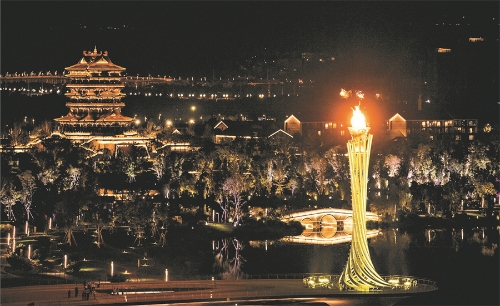Qu Qingshan: An eminent feature: Chinese modernization is the modernization of a huge population
2023-10-16 15:14:32 | Author:Qu Qingshan
General Secretary Xi Jinping emphasizes this issue, for the modernization of a country with a vast population is an "eminent feature" of Chinese modernization. Rightly perceiving and aptly navigating this "eminent feature" is critically essential for propelling Chinese modernization effectively in practice.
China is distinctly characterized by its immense population, constituting one-fifth of the global total. There are no more than 30 countries worldwide that have achieved industrialization, with a collective population not exceeding one billion. The United States, being the nation with the largest population among industrialized countries, has 333 million people, followed by Japan with 125 million. Yet, the US population is merely a quarter of China's, while Japan's is only one-eleventh. Other nations, such as Germany, the United Kingdom, France, Italy, Spain, Australia, the Republic of Korea, and Canada, maintain populations in the tens of millions, with Germany leading in this tier at over 84 million. Countries like Portugal and Sweden have populations in the tens of millions, while Switzerland, Denmark, Finland, Norway, and Singapore operate on a scale of millions. Singapore, with a population over 5.6 million and a land area of just 733 square kilometers, is recognized as a city-state. China's massive population scale is unparalleled on the global stage.
The opening ceremony of the 31st World University Summer Games is held at the main stadium of Dong'an Lake Sports Park in Chengdu on the evening of July 28, 2023. Pictured is the main torch of the Chengdu Universiade. Photo credit: Xinhua News Agency reporter Cao Yiming.
Confronting enormous and intricate challenges due to its sizable population, China experiences uneven population distribution, with dense populations in the eastern and southeastern regions and sparse populations in the western and northwestern areas. China's per capita availability of arable land, water, and mineral resources considerably lags behind the global average, with its per capita arable land less than half and water resources about a quarter of the worldwide average. In China, even minor issues, when multiplied by over 1.4 billion, transform into global dilemmas, while even abundant wealth, when divided by the same number, significantly diminishes per capita. Addressing issues related to food, employment, wealth distribution, education, healthcare, housing, elderly care, and childcare is no straightforward task. The difficulty and complexity of China’s modernization in its unique context are unprecedented.
Navigating a path dictated by a substantial population, China must carve out its own trajectory. The historically formed political philosophy of grand unity, a singular yet diverse culture, and an ethnic distribution of broad dispersion and minimal congregation are all intrinsic to the nation. Every ethnicity within China has played a pivotal role in sculpting the identity of the Chinese nation. The nation’s extensive history, rich culture, distinct values, and humanitarian spirit have precluded the existence of ready-made models or prior examples to follow in its pursuit of modernization. Whereas Western modernization has undergone a sequential progression through industrialization, urbanization, agricultural modernization, and informatization, China's path toward modernization will be a parallel evolution, entwining developments in industrialization, IT application, urbanization, and agricultural modernization. Consequently, the path and means of China's modernization are destined to bear their own unique features, distinctly characteristic of China.
A sizable population can wield significant contributions to the advancement of human civilization. China has sustained nearly 20% of the world's population utilizing just 9% of the world's arable land. Since initiating the reform and opening up policy in the late 1970s, China has diminished its impoverished population by approximately 800 million, representing over 70% of the global poverty reduction, thereby making a monumental contribution to the global poverty alleviation effort. Chinese modernization has shattered the myth that modernization necessitates Westernization, unveiling an unprecedented scenario, offering the world a unique model of modernization, presenting other developing countries with a new alternative, and contributing Chinese wisdom, approaches, and strength to world peace and development. The achievement of modernization in China is poised to reshape the global landscape of modernization.
The “eminent feature” of modernization in a populous nation demands that we contemplate issues, formulate decisions, and manage affairs, keeping in view China's national conditions while propelling Chinese modernization forward. We must neither harbor excessive ambitions nor adhere strictly to old conventions, maintain historical patience, make progress while maintaining stable performance, and seek gradual advancement and continuous promotion.
(Qu Qingshan: President of the Institute of Party History and Literature of the Central Committee of the Communist Party of China)

